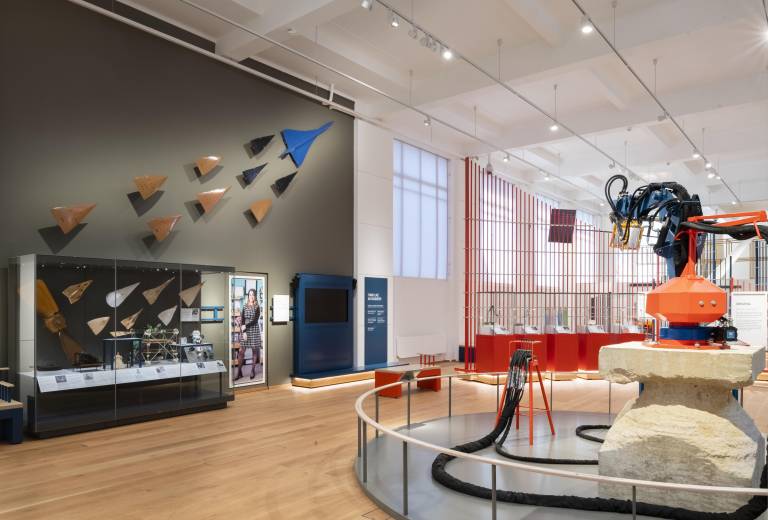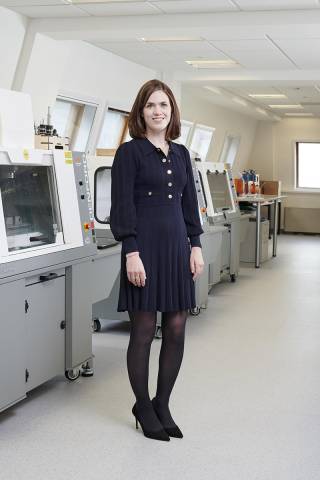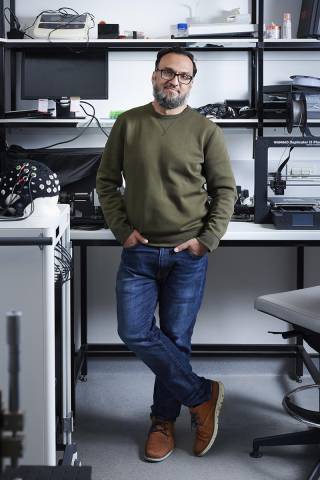UCL engineers celebrate International Women in Engineering Day at gallery opening
23 June 2023
A new Science Museum gallery highlighting world-changing engineering innovations and the diverse and fascinating range of people behind them includes UCL’s Professor Rebecca Shipley and Professor Ilias Tachtsidis.

Human stories are at the heart of the Engineers gallery, which aims to inspire young people to pursue engineering careers and challenges common misconceptions about who engineers are and what they do, offering a fresh perspective on the breadth and diversity of these important roles.
Opening today on International Women in Engineering Day, the gallery also seeks to address the longstanding inequality in the number of young women being accepted onto university engineering degrees (18%) and in the UK engineering workforce (16.5%). By featuring young female engineers from different backgrounds, and their real-world solutions that help society to flourish, the free gallery inspires the next generation of girls to consider choosing engineering careers.

Professor Rebecca Shipley, Director of the UCL Institute of Healthcare Engineering, said: “Engineers don’t just build bridges and buildings. We work across a wide range of sectors and cut across silos. I think there are a lot of young people who know they want to be involved in healthcare in some way and help people live healthier lives, but they don't realise the power that engineering has to enable that. The field is incredibly interdisciplinary and we need engineers to achieve that vision.
“Healthcare engineers come from all disciplines and backgrounds – you don't need to fit a particular mould to be a fantastic engineer. In fact, a diverse team is essential to success.”
Among the items on display is a Ventura CPAP (Continuous Positive Airway Pressure) device, a breathing aid that can help keep Covid-19 patients out of intensive care. The device was rapidly developed in just 100 hours by a team from UCL and their collaborators in the first weeks of the pandemic, in which Professor Shipley played a leading role.
Also on display is another UCL engineering innovation, the ‘Metabolight’, developed by a team led by Professor Ilias Tachtsidis (UCL Medical Physics and Biomedical Engineering). The device uses invisible, harmless near-infrared light to detect signs of brain injury in newborn babies.

Marking the 10th anniversary of the world’s leading award for engineers, the Queen Elizabeth Prize for Engineering (QEPrize), the gallery will showcase previous winners of the prize, alongside some of the most exciting engineering innovations of recent years.
Dr Hayaatun Sillem CBE, CEO of the QEPrize and of the Royal Academy of Engineering, said: “2023 marks the first decade of the QEPrize and its role in championing bold, ground-breaking engineering innovation that is of global benefit to humanity. Working with our global QEPrize Ambassador Network of early career engineers, some of whom are featured in this exhibition, we aim to inspire young people from all backgrounds, all around the world, to consider a future career in engineering.”
The Engineers gallery is open now at the Science Museum, London. Entry is free with a pre-booked ticket.
Links
- Professor Rebecca Shipley's academic profile
- Professor Ilias Tachtsidis's academic profile
- UCL Institute of Healthcare Engineering
- UCL Medical Physics and Biomedical Engineering
- UCL Faculty of Engineering
- Women in Engineering report
Image
Images courtesy of Science Museum Group.
Media contact
Dr Matt Midgley
E: m.midgley [at] ucl.ac.uk
 Close
Close

